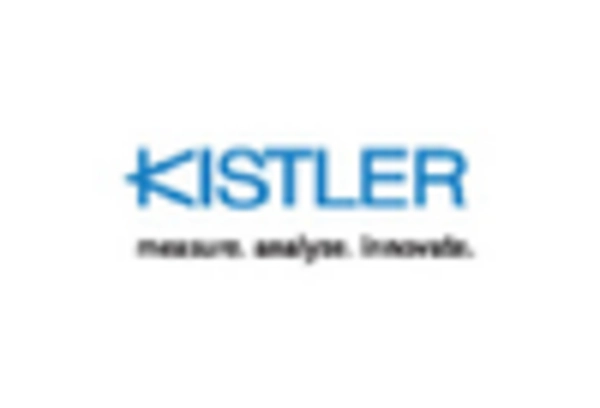Advancements in Sensor Technology
Technological advancements in sensor technology are playing a pivotal role in shaping the Road Weather Information System Market. The development of more sophisticated sensors has enabled the collection of high-quality weather data, which is essential for accurate forecasting and analysis. These sensors can monitor various parameters, including temperature, humidity, and road surface conditions, providing comprehensive insights into weather impacts on transportation. As sensor technology continues to evolve, the capabilities of road weather information systems are expected to expand, leading to improved data accuracy and reliability. This evolution is likely to attract more investments in the Road Weather Information System Market, as stakeholders seek to leverage cutting-edge technology to enhance operational efficiency and safety.
Growing Demand for Real-Time Data
The increasing need for real-time weather data is a primary driver for the Road Weather Information System Market. As transportation systems become more complex, the demand for timely and accurate weather information has surged. This is particularly evident in regions prone to severe weather conditions, where timely data can significantly enhance safety and operational efficiency. According to recent statistics, the market for road weather information systems is projected to grow at a compound annual growth rate of approximately 8% over the next five years. This growth is largely attributed to the rising awareness of the benefits of real-time data in reducing accidents and improving traffic management. Consequently, stakeholders in the Road Weather Information System Market are increasingly investing in advanced technologies to meet this demand.
Government Initiatives and Funding
Government initiatives aimed at improving road safety and infrastructure are significantly influencing the Road Weather Information System Market. Various governmental bodies are recognizing the importance of integrating weather data into transportation planning and management. For instance, funding programs have been established to support the deployment of advanced road weather information systems. These initiatives not only enhance public safety but also contribute to more efficient traffic flow and reduced maintenance costs. In recent years, several countries have allocated substantial budgets for the development and implementation of these systems, indicating a strong commitment to leveraging technology for better road management. This trend is expected to continue, further propelling the growth of the Road Weather Information System Market.
Rising Incidence of Extreme Weather Events
The increasing frequency of extreme weather events is a critical driver for the Road Weather Information System Market. As climate change continues to impact weather patterns, the need for robust weather monitoring systems becomes more pronounced. Extreme weather conditions, such as heavy snowfall, flooding, and severe storms, pose significant challenges to road safety and infrastructure. The Road Weather Information System Market is responding to this challenge by developing advanced systems that can provide timely alerts and forecasts. Recent studies indicate that regions experiencing a rise in extreme weather events are more likely to invest in these systems, recognizing their potential to mitigate risks and enhance safety. This trend underscores the growing importance of weather information systems in adapting to changing environmental conditions.
Integration with Intelligent Transportation Systems
The integration of road weather information systems with intelligent transportation systems (ITS) is emerging as a significant driver for the Road Weather Information System Market. This integration allows for the seamless exchange of data between weather monitoring systems and traffic management systems, enhancing overall transportation efficiency. By utilizing real-time weather data, traffic management centers can make informed decisions regarding traffic flow, road closures, and safety measures. This synergy not only improves the responsiveness of transportation networks but also contributes to reduced congestion and enhanced safety for road users. As cities increasingly adopt smart transportation solutions, the demand for integrated road weather information systems is expected to rise, further propelling the growth of the Road Weather Information System Market.

















Leave a Comment